Softing CTK5015 Handleiding
Softing
Meetapparatuur
CTK5015
Bekijk gratis de handleiding van Softing CTK5015 (4 pagina’s), behorend tot de categorie Meetapparatuur. Deze gids werd als nuttig beoordeeld door 10 mensen en kreeg gemiddeld 4.8 sterren uit 5.5 reviews. Heb je een vraag over Softing CTK5015 of wil je andere gebruikers van dit product iets vragen? Stel een vraag
Pagina 1/4

C TABLE OOLTM
MULMULMULMULMULTIFUNCTION CABLE METERTIFUNCTION CABLE METERTIFUNCTION CABLE METERTIFUNCTION CABLE METERTIFUNCTION CABLE METER
USER’S GUIDEUSER’S GUIDE
USER’S GUIDEUSER’S GUIDE
USER’S GUIDE
APPLICATIONS
Installation - Measure the length of a cable remaining on a spool or in a box prior
to pulling a new run.
Trouble Calls - Identify the type of fault in a cable (short or open) and the location
by measuring the distance to the fault.
Moves, Adds and Changes - Verify cable lengths are less than the maximum
100 meters allowed prior to connecting computers or network equipment.
Job Costing - Measure the actual length of cables being replaced or upgraded.
Cabling Management- Identify a wire pair on a punchdown block by locating the
transmitted tone.
WARRANTY
Psiber Data Systems Inc. warrants that the product shall be free from defects in parts or workmanship for a period of 12
months from the date of purchase if used in accordance with Psiber Data Systems Inc. operating specifications.
THIS IS THE ONLY WARRANTY MADE BY Psiber Data Systems Inc. AND IS EXPRESSLY MADE IN LIEU OF ALL
OTHER WARRANTIES EXPRESSED OR IMPLIED, INCLUDING BUT NOT LIMITED TO ANY IMPLIED WARRANTIES OF
MERCHANTABILITY OR FITNESS FOR ANY PARTICULAR PURPOSE.
Should any parts or workmanship prove defective, Psiber Data Systems Inc. will repair or replace at Psiber Data Systems’
option, at no cost to the Buyer except for shipping costs from the Buyer’s location to Psiber Data Systems Inc. This is Buyer’s
SOLE AND EXCLUSIVE REMEDY under this Agreement. This warranty does not apply to products which have been subject to
neglect, accident or improper use, or to units which have been altered or repaired by other than an authorized repair facility.
Return of Equipment - To return a product to Psiber Data Systems Inc., first obtain a Return Authorization number from
our Customer Service by calling 619-287-9970. The RA# must be clearly marked on the shipping label, or the package will not be
accepted by Psiber Data Systems Inc. See sample label below.
To: Psiber Data Sytems Inc.
7075-K Mission Gorge Road
San Diego, CA 92120
RA# XXXXXXXX
CableTool, psiber and the Psiber logo are trademarks of Psiber Data Systems Inc. Copyright 2002 Psiber Data
Systems Inc. All rights reserved.
P/N 1005-0500-0000 Rev. C

UNDERSTANDING NVP
The CableTool makes a very precise measurement of the time it takes for an
electrical signal to travel down a cable, hit a short or open and travel back to the
unit. The time is converted into length based on the speed that the electrical signal
travels along the cable being tested. Different cables have different electrical
properties and the speed that the electrical signal travels will vary based on the
NVP of the cable.
NVP (Nominal Velocity of Propagation) is the relative speed that an electrical
signal will travel through a media. A vacuum is a perfect media with an NVP of
100. All cables have an NVP less than 100 and typically in the range of 50 to 80.
Using the most accurate NVP available will provide the most accurate length
measurements.
The NVP for electrical service cables (such as Romex, BX, UF-B) varies
significantly between manufacturers and even between production lots from the
same manufacturer. Data cables have special manufacturing processes that
produce fairly consistent NVP values. The NVP of a cable can also be different if it
is wound on a spool or laying flat (installed). Data cables have the least variation
between wound and flat and some coaxial cables show significant variation. NVP
is specified for many types of cable and may be printed on the cable spool or
box. Contacting the manufacturer or checking their website can also be a good
source of accurate NVP information. Using the Custom Cable Setup to determine
the NVP of a known cable length provides accurate results. The NVP values
prestored in the CableTool provide typical values for cable types from all
manufacturers.
CABLE TYPE LIST ABBREVIATIONS
The prestored Cable Type List uses the following abbreviations:
NM - Non-Metallic (Romex)
BX - Aluminum Armored Cable with Aluminum Ground
MC - Aluminum Armored Cable with Copper Ground
HC - Aluminum Armored Cable for Health Care Applications
UF - Underground Feeder (Direct Burial Cable)
SOOW - 600V Rubber Jacketed Portable Cord
EXTEN - Outdoor Extension Cable (Typically Orange Color)
W/G - With Ground Wire
ZIP - Lamp Cord
THHN xCDT - THHN Wire in Conduit
CAT - Category
PLNM - Plenum Grade
UTP - Unshielded Twisted Pair
STP - Shielded Twisted Pair
COAX - Coaxial Cable
SPKR - Speaker Wire
TEL - Telephone Twisted Pair
PIC - Plastic Insulated Conductor (Aerial TelephoneCable)
THERM - Thermostat Wire
BOX CONTENTS
• CableTool Multifunction Cable Meter • Carrying Case • User Guide
• Four AA Alkaline Batteries • Two Banana Jack to Alligator Test Leads
• • One Banana Jack to BNC Adapter One BNC to “F” Adapter
BATTERY
The CableTool operates on four AA alkaline
batteries. Remove the battery cover at the back of
the unit and insert the batteries with the orientation as
shown. Battery polarity is marked inside the battery
well for reference.
INTRODUCTION
The CableTool Multifunction Cable Meter electrically measures the length of a
cable using Time Domain Reflectometry technology. The CableTool measurement
begins by transmitting an electrical pulse into the connected cable. The electrical
pulse travels along the cable until it hits a discontinuity (either a short or an open)
and is then reflected back to the unit. The CableTool precisely measures the time
between launching the pulse and recieving the reflected pulse. The time
measurement is converted to distance using the cable NVP (Nominal Velocity of
Propagation).
Additionally, the CableTool provides a continuous reading of any voltages
present on the cable under test and features four different tone frequencies and
patterns for tracing cables with a tone probe.
MECHANICAL FEATURES

SAFETY
Always disconnect the test leads from any cable before opening the battery
compartment cover.
CABLETRACKER 15 TONE PROBE (OPTIONAL)CABLETRACKER 15 TONE PROBE (OPTIONAL)CABLETRACKER 15 TONE PROBE (OPTIONAL)CABLETRACKER 15 TONE PROBE (OPTIONAL)CABLETRACKER 15 TONE PROBE (OPTIONAL)
OVERVIEW
The CableTracker Model 15 Probe identifies cables and terminations by detecting a
trace tone signal transmitted by the CableTool. When the Probe is near the correct cable
pair or punchdown, it indicates detection by emitting an audible signal with the same
pattern that is selected on the CableTool.
CABLE TRACING
Connect the CableTool to a cable. Turn on the Model 15 Probe by pressing and
holding the button. Place the probe tip near the cable or termination to be identified and the
Probe will emit an audible signal. The audible signal is loudest when the Probe is near the
correct cable or termination point. The volume can be adjusted by rotating the thumbwheel
located above the button. The Power ”ON” indicator is illuminated when the unit is on and
the battery has adequate voltage.
BATTERY
The CableTracker Model 15 Probe operates on one 9 volt alkaline battery. Remove
the battery cover at the back of the unit, connect the battery to the battery snap cable, insert
the battery in the battery well and replace the battery cover.
BATTERY LIFE
The Model 15 Probe will operate for approximately 16 hours on one 9 volt alkaline
battery. When the battery is below the level required for the Model 15 to operate properly,
the Power “ON” indicator will not illuminate.
OPERATION
Attach the test leads to the CableTool by inserting the safety banana plugs
into the banana jacks at the top of the unit. Turn the CableTool on by pressing the
“PWR” button. The startup screen is shown for a few seconds and then the Mode
Screen is displayed. Clip one test lead to each of two conductors of the cable to
be tested.
MODE SCREEN
When the Mode Screen is displayed, the CableTool immediately starts
measuring voltage and updates the reading
several times per second. If more than a 6-8
volts are present on the cable, do not conduct a
Length test or apply a Tone signal until the
circuit is de-energized. The CableTool can
withstand continuous input voltages of up to 250Vrms.
LENGTH SCREEN
Pressing the Length function key in the Mode Screen presents the Length
Screen. The CableTool automatically starts
measuring the distance to the fault (open or
short) using the NVP of the Default Cable (see
Default Cable Setup). Using the Up/Down
Cursor key, any of the eight user selected cable
types, the four custom cable types or a cable type from the prestored cable list
can be selected and the length is corrected for the corresponding NVP. The length
measurement is continuously updated.
When the NVP for a cable is known to be different than the displayed NVP,
the NVP can be changed by pressing the Select
function key to move the arrow to the NVP field
and then pressing the Up/Down cursor key to
modify the NVP. The NVP can also be modified
and stored in Cable List setup.
RECOMMENDATION: Before starting a job with a new spool or box of cable
that has a known length, make a length measurement with the CableTool to
determine if the prestored NVP for that cable type provides the correct length. This
is done by selecting a cable type that matches or is similar to the type of cable to
be tested, press the Select function key to move the arrow to the NVP field and
press the Up/Down Cursor key until the displayed length matches the known
length printed on the box or spool. The modified NVP will only be used while
making this length measurement, exiting the screen or turning off the power will
reset the NVP to the original value. To store the cable type with the modified NVP
see “Cable List Setup”. The prestored NVP is a typical value and adjusting the
NVP to the actual length will provide more accurate results. See “Understanding
NVP” for more information.
Product specificaties
| Merk: | Softing |
| Categorie: | Meetapparatuur |
| Model: | CTK5015 |
Heb je hulp nodig?
Als je hulp nodig hebt met Softing CTK5015 stel dan hieronder een vraag en andere gebruikers zullen je antwoorden
Handleiding Meetapparatuur Softing

30 Januari 2025

27 Juli 2023
Handleiding Meetapparatuur
- Mahr
- Honeywell
- Crowcon
- Rothenberger
- Shimano
- PCE
- Aktobis
- Aranet
- Testboy
- Eltako
- Eizo
- Siglent
- Autel
- Fysic
- Qubino
Nieuwste handleidingen voor Meetapparatuur
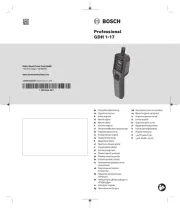
15 September 2025
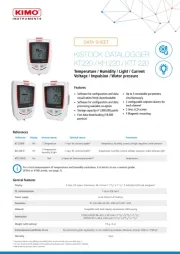
15 September 2025
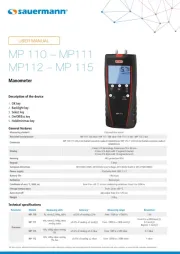
15 September 2025
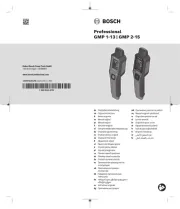
15 September 2025
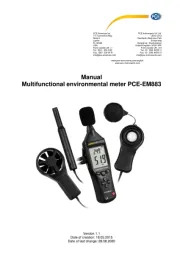
15 September 2025
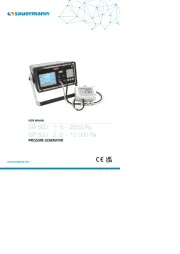
15 September 2025
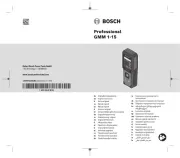
15 September 2025

15 September 2025
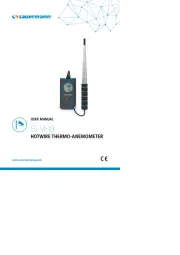
14 September 2025
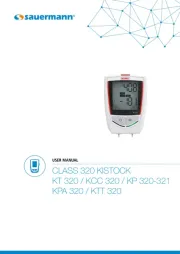
14 September 2025